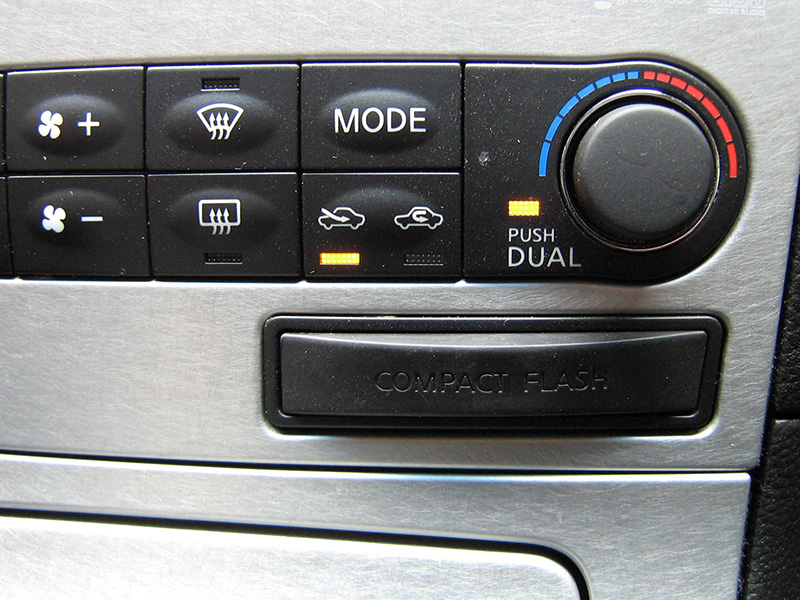Time-saving techniques for technicians whose customers ask for help with Bluetooth pairing of their phones, GPS map updates, using the on-board screen maintenance reminders, creating special key remote behaviors, and more.
For many car buyers, there is more to consider than the mechanical specifications of the vehicle they’re considering. Nissan vehicles can be equipped with many options that make living with the vehicle more comfortable and convenient.
When it comes time for maintenance, customers may ask for “just one more thing†at the service counter. These requests usually involve small tweaks that they believe they themselves can perform, but don’t have the time. As a technician, you’ll often consider these requests as something to be done as a courtesy. Let’s cover some of the most common requests, and outline speedy ways to finish the task without spending more time than necessary.
The Different Types of Creature Comforts
The optional equipment features of Nissan vehicles usually fall into two categories:
- Features that must be configured by the user in order to operate at all. Examples of this type include: Bluetooth phone pairing, and seat or steering wheel position memory recall. Without configuration, the feature will do nothing.
- Features that work “out of the box†when a vehicle is delivered to the customer, but may allow for special behaviors, or require periodic updates. This category includes GPS map file updates, keyless entry remote behaviors, and specialized maintenance reminders.

With many phones, check the SETTINGS menu for BLUETOOTH and then set the phone to discoverable mode.
Don’t be too quick to dismiss customers’ requests for help in setting up the optional features mentioned in the first category above. When you think about it from your customers’ perspective, they assume your shop is working on Nissan all the time and the setup would be quick and simple for you. Therefore, it would be easier for them to ask for your expert help than to read the owner’s manual and try to figure it all out. These features are designed to be completed by the customer. Nevertheless, it gives your shop a professional appearance without really requiring much additional energy to be expended.
“I just got a new phone, but it won’t connect.â€
Bluetooth pairing of phones with the Nissan standard hands-free navigation unit can sometimes be frustrating. The reason is not because of Nissan’s design, but rather the fact that each phone may be different. All Nissan vehicles that have Bluetooth capabilities will include details on the exact pairing process in the owner’s manual. This section should help you understand the basics of pairing, as well as shed light on common problems seen in the field. Bluetooth devices create limited-range “Personal Area Networks†that use a similar method of secure connectivity to that of a coffee shop’s WiFi. The Bluetooth icon is actually a Viking rune word for a medieval Norse king, Harald Bluetooth, who unified Scandinavian tribes against the Danish. In modern times, the idea behind Bluetooth is to unify wireless communications among various types of small devices with a single standard.
The most common failure encountered in adding a new phone is when a customer has multiple phones associated with his or her Nissan. This is usually when there are two or more drivers, each with their own phone. Multiple phones may also be found when a previous phone was saved, but the customer has since replaced it with a new model. Properly set up, Nissan vehicles should be able to accommodate up to five different phones. Yet, complications still can develop. If the customer is having a pairing problem, first check the Nissan navigation unit to determine how many phones are currently paired. You should reference the owner’s manual at this point, because the process can be different on a model-year basis. For example, the 2006 Murano will retain information about paired phones on the multi-function display (MFD), but the 2012 Rogue requires voice-command inputs to view/add/remove phones. Delete inactive phones and reattempt pairing. In some cases, it may be necessary to delete all saved phones, then begin the pairing process anew.
Other complications may come from the phone itself. Because the customer is not likely to carry around the phone’s owner’s manual, it helps to know the basics of how Bluetooth works so that you know what to look for. First, not all phones have their Bluetooth transmitters enabled by default. Confirm that Bluetooth is turned on by navigating the phone’s menu or screens until you find a dedicated “Bluetooth†section, or the general “Settings†section. You can also ask your customers because they may know their phone, but not their Nissan.With Bluetooth enabled, you must make the phone “discoverable.†If the phone is discoverable, then any other Bluetooth device can initialize connection. Refer back to the vehicle’s Bluetooth controls in the owner’s manual. You should now be able to find the phone’s Bluetooth Identifier displayed or spoken through the vehicle. At this point, the final step is to give the phone the passcode of the vehicle that ensures a secure connection.
According to most Nissan owner’s manuals, the code is “1234.†Note that none of the above can be done with the vehicle moving. Some phones are simply not supported. Additional reference material is available online from Nissan at: www.nissanusa.com/bluetooth/.
“Can you turn off (or on) the beep when I use my remote?â€
By default, the Intelligent Key system will flash the hazard lights and sound the horn when the customer locks or unlocks the vehicle. If the customer doesn’t want to make noise when getting home at night, he or she may request that you turn the horn function off. This is a very simple adjustment. Using the Intelligent Key, press the LOCK and UNLOCK buttons simultaneously on the remote for more than two seconds. The same procedure will reverse the behavior. When turning off the horn, the hazard lights will flash three times to indicate the change. When turning the horn back on, the hazard lights will flash and the horn chirps once. You may also be able to add value to your services by taking note of the keyless entry behavior. The customer may be wondering why the horn stopped chirping, but might think the change will be expensive to diagnose and repair. Let him or her know it’s an easy fix. Remember, it’s the little things that keep customers coming back.
“My Nissan’s GPS maps need to be updated.â€

This website will allow you or your customer to purchase any necessary CD, DVD, SD card, or activation coupon for GPS map updates.
GPS navigation is very important to many customers. Nissan navigation systems are true GPSs that use satellite positioning, and an offline map database. This has its advantages over other GPSs found on smart phones. Nissan Navigation will work without internet or cellular data connectivity unlike the smart phones. This means that the vehicle can be off the beaten path and still provide useful map information even when the customer cannot call for directions. Additionally, dedicated GPS navigation displayed on the dash does not require the driver to look down at his or her cell phone while driving, potentially taking eyes off the road, and a hand off the wheel. However, on-board GPSs do not benefit from constant online connection, which means that map data may become obsolete.
Nissan releases yearly map updates every fall for vehicles equipped with GPS navigation. In most cases, the updating process is as simple as changing a DVDROM or SD card. Nevertheless, customers may still seek help in locating the DVD drive or card port inside their vehicles, or they may prefer that your shop handle the entire procurement and installation process.
On some vehicles, it is even necessary to use the CONSULT scan tool to install map updates. Starting in 2002, early versions of the Nissan navigation system use a CD-ROM or DVD-ROM for map data. For updating, the new disc is installed in the drive and left in place.
In MY 2008, the HDD (Hard-Disc Drive) system appeared in certain models. This amounts to permanent storage for map updates as well as recorded music through the Music Box system. To update the map data, a Nav update DVD set is mailed to dealers. Technicians install the map data on the CONSULT. The customer then must visit the dealership, where a tech will use a procedure involving the CONSULT and the navigational reprogram adapter kit for installation, for which a fee is typically charged. Bulletins NTB08-106 explains the situation in detail.
Starting in MY 2010 for 350Z/370Z, Altima, and Maxima models, the system becomes HDD-DVD. This advance allows customers to order and install update discs themselves, which are then removed from the drive.

Vehicles equipped with the HDD will have a compact flash port somewhere on the dash that looks like this. It cannot be opened with the vehicle on.
For entry-level Nissans, MY 2010 and up, updates are on Secure Digital (SD) cards, which look like very small floppy disks. The SD card slot is located on the face of the navigation unit under the tip-up cover. The cards are fully programmed; simply swapping them out is all that’s necessary. Recently, Nissan has established a very useful resource website for all things navigation at www.nissannavigation.com. You will be able to find a quick-reference sheet for the types of update media necessary for various vehicle models, the location of the data drives (look for the Adobe PDF icon and “Nissan Disc Drive Locator” — drives may be in the trunk, under the center console or passenger seat, etc.), as well as an ordering system for purchasing the disc or activation code.
Keeping Your Customers Happy
There are many little things that hold value for customers, and it’s up to your shop to be able to accommodate their wishes. Taking the extra time to perform courtesy customizations will reinforce the professionalism of your shop and keep Nissan customers loyal.










0 Comments